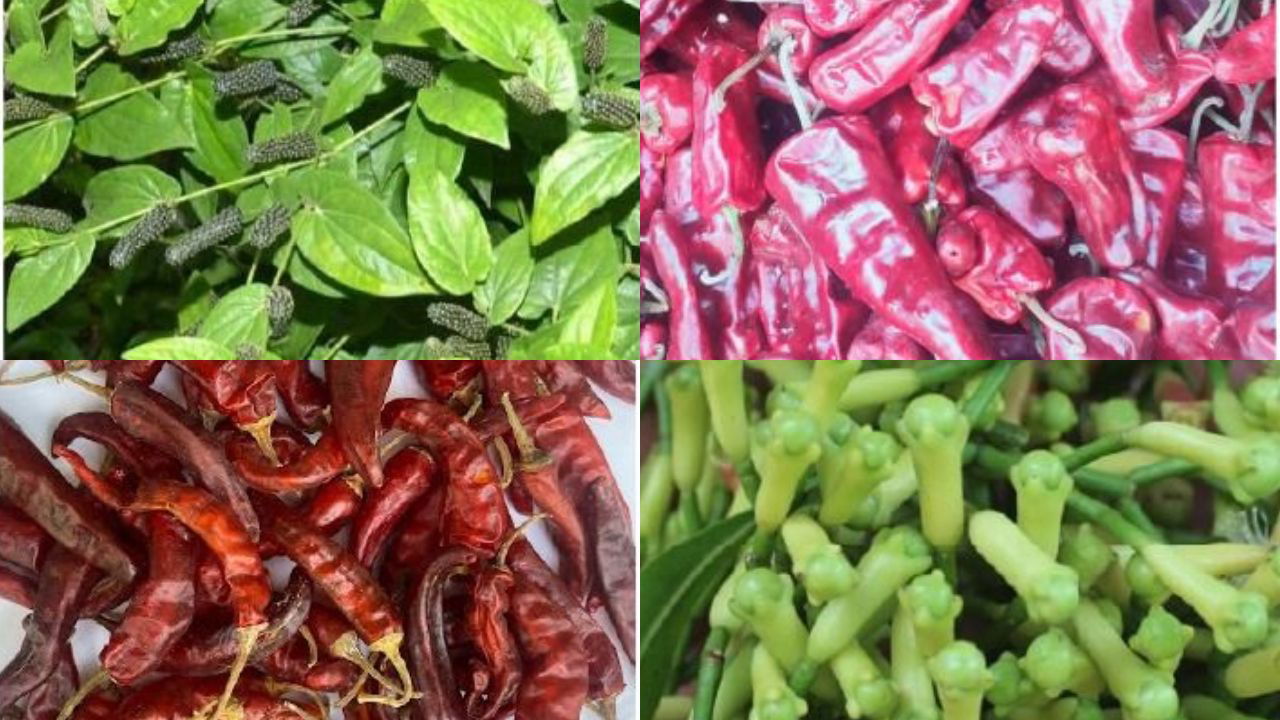
India has recently added four unique spices to its list of Geographical Indication (GI) tagged products. The GI Registry, Government of India, has recognized spices from Maharashtra, Telangana, Tamil Nadu, and Kerala. These include Amaravati Pippali from Maharashtra, Warangal Chapata Chilli from Telangana, Virudhunagar Samba Vattal Chilli from Tamil Nadu, and Thaladan Grambu (Clove) from Kerala. The GI tags will help preserve the uniqueness of these spices and enable farmers to receive better market value for their produce.
Warangal Chapata Chilli: Telangana
Cultivated in Telangana's Warangal region for over 80 years, the Warangal Chapata Chilli, has officially earned a Geographical Indication (GI) tag. This is the 18th product from Telangana to receive the prestigious Geographical Indication (GI) tag.
Locally known as “Tomato Chilli” because of its tomato- like appearance, this chilli is famous for its bright red color and mild spiciness. With a Scoville Heat Unit (SHU) rating between 3,100 and 6,500, it provides a gentle heat, making it perfect for pickles and widely used as a natural food coloring. The chilli is rich in oleoresin, which gives it its strong red shade. The unique soil and climate of Warangal play a big role in giving this chilli its special qualities.
The GI tag is expected to improve its market demand and boost income for the farmers who have been growing this variety for generations.
Virudhunagar Samba Vathal: Tamil Nadu
Tamil Nadu’s Virudhunagar Samba Vattal is a sun-dried chilli variety known for its deep red color and strong, pungent taste. It plays an important role in Tamil cuisine, adding heat and flavor to a variety of dishes. Grown mainly in areas like Virudhunagar, Sattur, and Arupukottai, this chilli thrives in the region’s suitable soil and dry climate, which contribute to its unique flavor.
It is especially known for its high capsaicin content of 0.24%, which is greater than that of the popular Guntur Sannam chilli. Well received in both domestic and international markets, Samba Vattal has gained attention for its quality. With the GI tag, its popularity is expected to grow further, helping farmers get better recognition and improved prices for their produce.
Amaravati Pippali (Long Pepper): Maharashtra
Amaravati Pippali, or Long Pepper, is a traditional spice cultivated in Maharashtra's Amaravati region. This spice is highly valued for its medicinal properties, especially in Ayurveda, where it is used to treat respiratory and digestive disorders. The GI tag ensures the protection of its authenticity and enhances its market recognition, benefiting local farmers.
Thalassery Clove: Kerala
Kerala, often referred to as the "Land of Spices," has added another feather to its cap with Thaladan Grambu (Clove) receiving the GI tag. This aromatic clove variety is grown in the state’s spice belt and is highly regarded for its intense fragrance and medicinal benefits. The GI status will help protect the uniqueness of this spice and promote sustainable farming in the region.
The GI tag ensures that only spices grown in these specific regions can be marketed under these names, preventing imitations and increasing market value.
Four unique treasures of India’s spice bounty have earned the prestigious Geographical Indication (GI) tag@DoC_GoI #IndianSpices #GITag #SpiceHeritage #FlavoursOfIndia pic.twitter.com/k5ItgjOFxP
— SPICES BOARD INDIA (@Spices_Board) April 4, 2025
















